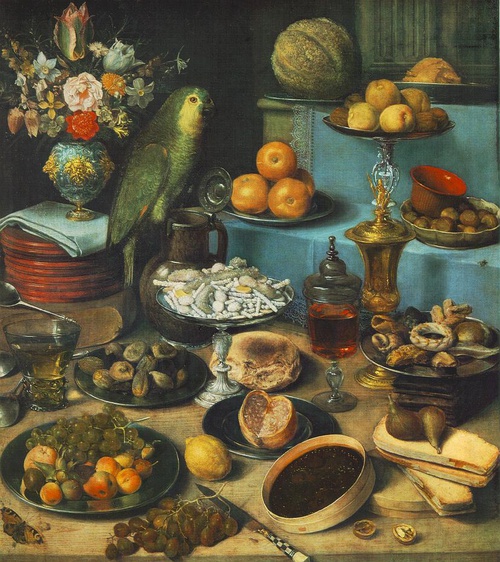
-
- Jan. 25, 2024 / 11 a.m. to noon
- Add to mobile calendar
- Add to Google calendar
While still-life painting did exist in the Middle Ages and Renaissance, the growth of the genre occurred primarily in the 17th century. The Netherlands and Spain witnessed the greatest advancements of what the Dutch called stilleven or the momentary stopping of time. Both cultures utilized the concept of vanities which represented the transience of life, the futility of pleasure, and the certainty of death. Fruit, sumptuous bouquets of flowers, food, or man-made items such as books and musical instruments were often depicted. These artworks served as symbols of affluence. Items such as skulls or candles however were called memento mori and referred to the fragility of life.
Even though still-life painting was considered a minor genre at this time, it did become popular among the bourgeoisie.In Protestant Holland, the upper classes used still-life painting to decorate their homes. The country's strong economy allowed for many painters such as Pieter Claesz and Willem Claesz Heda to gain popularity with their work. Spain also saw still-life painting gain popularity. Often referred to as bodegones, Spanish painting differed from the Dutch or Flemish versions. They were frequently more austere with religious overtones. The paintings of Francisco de Zurbaran and Juan Sanchez de Cotan were some of the most beautiful ever created in the 17th century. Their work and that of many Dutch and Flemish artists will be presented in this docent-led talk.

Join us live on Zoom: https://us06web.zoom.us/j/86148328476?pwd=UmpTRGhYZS9UQnAxeHd6aHpCbENFdz09
Note that you will be muted upon entry and that this talk is being recorded as well as live-streamed. Please save all questions for the end.

Join us live on Facebook: https://www.facebook.com/events/s/free-virtual-talk-the-history-/755104086482101/
Note that this talk is being recorded as well as live-streamed. Please save all questions for the end.
✥ ✥ ✥ ✥ ✥
You can find all of our previous Virtual Talks on our Facebook Page (@timkenmuseum). If you would like to support the continuation of our free tours and education programming, please consider donating to the Timken Museum of Art at https://www.timkenmuseum.org/join-support/your-giving/.